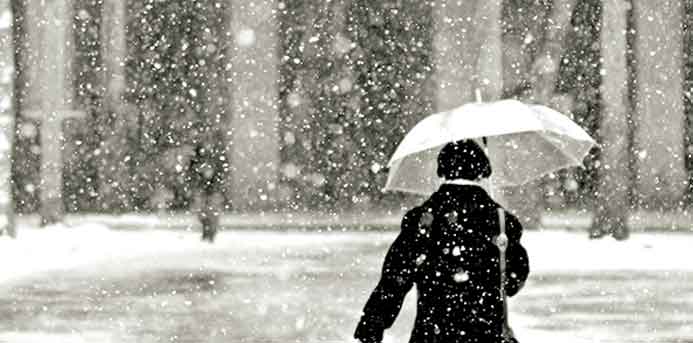Back in December, the editors at Make It Better asked me to write about Seasonal Affective Disorder (SAD).
But I just couldn’t muster up the energy to open my laptop. Because like 10 percent of all Chicagoland residents, I suffer from SAD, a type of depression that occurs at the same time every year – usually, in winter.
But last week, having watched the entire season of Jersey Shore (which I’m deeply ashamed to admit), I decided to conquer this article, and wage war against my own battle with SAD.
Symptoms
During winter, I sleep until 10:30 almost every morning, even though I go to bed at midnight. To some of you, ten and a half hours of sleep may sound dreamy, but all that sleep has left me feeling lethargic and spacey. Oversleeping is one of the main signs of SAD, along with:
- Depression
- Hopelessness
- Anxiety
- Lethargy
- Withdrawal from friends and family
- Loss of interest in activities you once enjoyed
- Appetite changes, especially a craving for foods high in carbs (pizza anyone?)
- Weight gain
- Trouble concentrating
“The main thing that people should keep in mind is that there’s a difference between the winter blues and actual SAD,” says Bethany J. Price, Ph.D., NorthShore University HealthSystem clinical psychologist. “SAD occurs at the same time every year. And you don’t need to suffer through it.”
Causes
The exact cause of SAD isn’t known. But doctors have some theories:
Your internal clock has a short circuit. Reduced sunlight in winter may confuse your body’s sleep cycle and lead to feelings of depression.
Nature makes you moody. Reduced sunlight plays havoc with your body’s production of melatonin, a natural hormone that controls mood and sleep.
You have less feel good chemicals floating around your brain. Reduced sunlight can also cause a decrease in the brain’s production of serotonin, which affects one’s mood.
The take home lesson? It’s not the cold weather that makes you depressed during winter. It’s the lack of sunlight.
Treatment
Research has shown these treatments to be effective:
Light therapy. Special boxes that emit a bright light mimic sunlight and seem to change one’s mood. Dr. Price suggests that you station the box about three feet away from you. Don’t stare at the box, just position it towards your face. For the best results, turn on the light before the sun rises. “You’re essentially extending the daylight hours that way,” she says.
People suffering from SAD should start using their boxes every day in early November and continue to do so through February. Prices vary based on the type and intensity of light. The Mayo Clinic has some suggestions.
Antidepressants. Because the brain produces less serotonin in winter, taking a medication that increases serotonin levels can help. The best options include Wellbutrin XL, Paxil, Zoloft, Proxac and Effexor.
Exercise. Exercise reduces stress, depression and anxiety. Some experts suggest that people suffering from SAD particularly benefit from outdoor (eek!) exercise, especially within two hours of getting up in the morning. “The myth is that when it is cloudy that the sun isn’t out,” says Chicago psychotherapist Jeffrey Sumber. “It’s there, it’s just not as bright. We always need to remember that it is sunny above the clouds.”
Vitamin D. Some experts believe people with SAD, or any type of depression, need more vitamin D. Dr. John Stracks, family and integrative medicine physician with Northwestern Memorial Physicians Group says, “One of the first things I test for is Vitamin D levels. The government said recently that people should take less Vitamin D, but in SAD cases, I suggest people take 2000 mg per day.”
Psychotherapy. As with any form of depression or anxiety, talking to a professional can help you change habits and thought patterns, and learn coping mechanisms. Sumber says, “Some people are so affected by SAD that they feel unable to get out of bed, go to work or even eat. In cases where these symptoms are so severe it is difficult not to consider big questions like why not move to Arizona?”
SAMe. This over-the-counter supplement has proven to be effective in treating depression. “It’s especially helpful when someone has nervousness and depression,” Stracks says. “The only downside is that it’s a little expensive.”
Mind-body therapies. Acupuncture, yoga, meditation and massage reduce stress and depression. “They’re part of this holistic treatment plan,” Stracks says. “They all reduce stress and depression.”
Vacation. For once, time in the sun truly is what the doctor ordered. “If there’s any possibility of getting somewhere warm, and getting sun, do it,” Stracks says. “The benefits last even after you come back.”
During the week it took me to write this article, I religiously followed the experts’ advice. And it must be working on some level – even though it’s 30 degrees and cloudy, I have enough energy to walk through the Lincoln Park Zoo this afternoon (but I might keep my pajamas on underneath my clothes).

